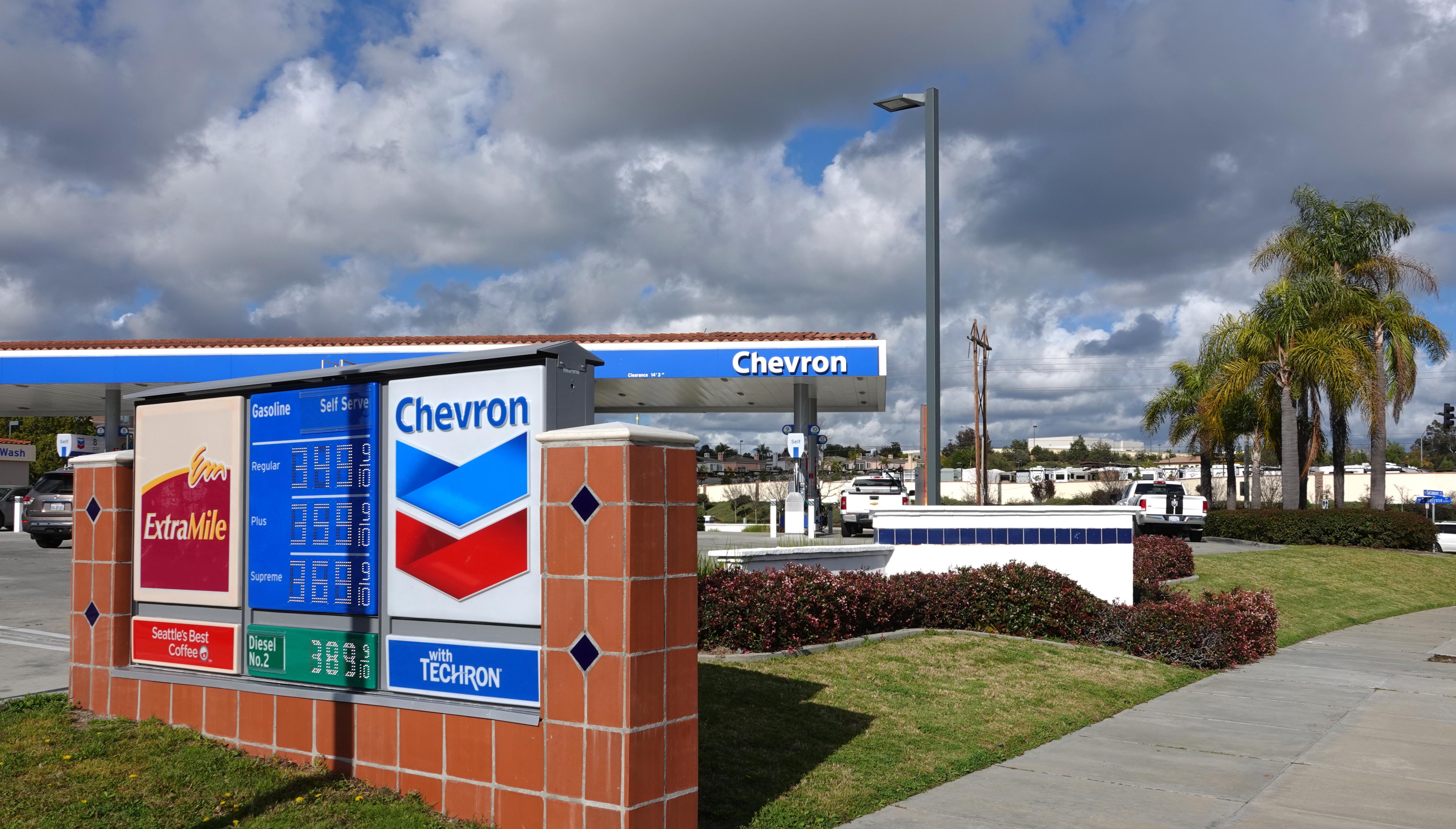Chevron: Is It a Good Time to Invest in the Stock?
Currently, Chevron stock trades at 18.5x its 2019 forward EPS and at 17.2x its 2020 forward EPS. The stock is higher than most of its peers.
Nov. 27 2019, Published 8:59 a.m. ET

Chevron (CVX) has been on investors’ radar after its recent weakness. The stock has fallen 0.7% sequentially. Other integrated energy stocks have fallen in the quarter. ExxonMobil (XOM), Suncor Energy (SU), and Royal Dutch Shell (RDS.A) shares have fallen 2.6%, 0.2%, and 1.5%, respectively.
These energy companies’ lower third-quarter earnings have been driving their stock performances. Chevron’s earnings have fallen 36% YoY. Also, the company reported an EPS of $1.36, which fell short of analysts’ estimates. The company’s upstream and downstream segments’ earnings fell in the quarter. As a result, we’ll review Chevron stock from an investment perspective.
Chevron’s valuation
Currently, Chevron stock trades at 18.5x its 2019 forward EPS and at 17.2x its 2020 forward EPS. The stock is higher than most of its peers in the industry.
On the 2020 EPS, Shell and BP trade at forward PE ratios of 10.5x and 11.2x, respectively. Similarly, Total SA (TOT) and Suncor trade at 10.2x and 10.3x, respectively.
Analysts gave Chevron a high valuation due to its competitive portfolios, financial strength, and earnings outlook.
Competitive upstream portfolio
Chevron has been spending sharply on its growth activities. The company invests in upstream projects and refining and chemical operations. In the first nine months, Chevron spent $14.9 billion across its segments. Notably, $12.8 billion was spent on the upstream segment. The company thinks that the upstream segment is a key earnings growth driver.
Chevron has made efforts to create a competitive upstream portfolio that’s capable of providing returns throughout oil cycles. The company has assets across the globe positioned for growth. Chevron’s upstream assets include conventional oil and gas assets like Tengiz in Kazakhstan, deep-water assets in the Gulf of Mexico, natural gas projects like Gorgon and Wheatstone in Australia, and shale and tight assets in the Permian Basin.
The company has produced record volumes of hydrocarbon this year. In the first nine months, Chevron’s total crude oil and natural gas production was 3.05 MMboed (million barrels of oil equivalent per day)—higher than 2.87 MMboed the previous year. In 2019, the company expects its output to rise 4%–7%.
Chevron’s financial strength
The company had the best debt ratio in the industry at the end of September. Chevron’s total debt-to-total capital ratio was 17.4%—the lowest in the industry. The company had surplus operating cash flows after covering crucial expenses like capex and dividends. Read XOM or CVX: Better Buy on Leverage, Liquidity, Growth? to learn more.
Chevron reached this financial position by maintaining firm discipline. The company made its cost structures leaner, high graded its portfolio by divesting non-core assets, and optimized its capital expenses. Chevron clearly stated its long-term financial priorities including dividend payments, capex, debt repayment, and buybacks.
Chevron also tweaks its priorities in the short term to suit the business conditions. In the third-quarter earnings conference call, the company’s vice president and CFO, Pierre R. Breber, said, “So what happens in the short-term, clearly, if we generate more cash than those three requirements. In particular, the dividend, which we increased earlier this year, the capital program which we’re holding flat and the buyback program, then it goes to the balance sheet.”
Earnings outlook
Wall Street analysts expect an 8% rise in Chevron’s earnings to $6.9 in 2020. Although the company’s growth isn’t comparatively high in 2020, its expected earnings fall is relatively low in 2019. In the current year, analysts expect Chevron’s earnings to fall 18% to $6.4. In 2021, they expect Chevron’s earnings to grow 11% to $7.6—faster than the growth in 2020.
Due to the recent weakness in Chevron’s stock price, it seems like the right time to invest in the stock. The company has a high earnings outlook backed by robust portfolios and a strong financial position.
